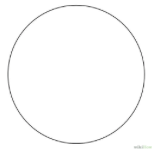Blank Mandala
July 2016
Those of you who know us-who have attended one of our workshops or trainings-know that we love mandalas. Big mandalas, small mandalas, coloring mandalas, all kinds of mandalas! Although in some ways mandalas are nothing more than a circle drawn on a piece of paper, there is something compelling about that simple form. Mandalas have been called “sacred circles” and are believed to represent the cycle of life, balance, and unity. They have been used in different cultures for centuries for healing and centering.
For example, Tibetan Monks create elaborate sand mandalas, painstakingly laboring over the intricate and deeply meaningful designs for hours. When the design is completed, it is swept up and dispersed into a moving stream or river whose waters then circulate its message of love throughout the world. The ephemeral nature of human life is symbolized by the impermanence of these mandalas.
Whether you ascribe to the notion that mandalas have some sort of metaphysical meaning or not, research does show that coloring mandalas is relaxing and reduces anxiety. And there does seem to be something innate about our relationship to circles. For example, the first shape that children usually draw is a circle; some suggest that this might be because that the circle shape is so similar to the human face or to a mother’s breast. Circles also appear in religious iconography in almost all cultures-yin yang, spirals, the sun, the moon, halos, labyrinths, etc.
When we present mandalas at our workshops, people usually have visceral responses to the circular shape. Most are relieved that there is a structure to orient them to the page. “A place to start-thank goodness!” On the other hand, a small subset will find the circle very restricting and flip the page over to the blank side.
How people respond to the circle is always instructive and becomes a useful discussion when we verbally process the images. If people use the side with the mandala circle, do they emphasize the boundary of the circle? Does the circle serve as a window, like a porthole, looking into a scene? Is it a sphere or a globe? What stays inside the circle? Outside of it? Where shapes and marks placed inside the circle?
Joan Kellogg wrote a wonderful book, Mandala Path to Beauty, which looks at the symbolism that emerges in different mandala imagery. We highly recommend it if you want to explore the possible meanings found in mandala designs. In many of our workshops, we often use mandalas on small 4″ x 4″ paper as a warm up to other art activities.
For example, using them to make symbol for “A strength that others appreciate about you.” Or using them in response to another warm up-writing about “Three things that went well that day or that you feel good about in your life.” We also use mandalas to have people “Represent the things that keep you strong, that are important to you, that have helped you get through when times have been rough” using color, line, shape, and symbols.
You can easily make your own mandala–just grab a circular glass, bowl, or a plate and trace around it. And there you have it! Once you’ve done that, see what your mandala seems to inspire in you. We’ve also included a link to the outline of a mandala, if you want to print out one that is pre-drawn. Try one out and see if you don’t find your self succumbing to “mandala magic”.
Positively yours, Rebecca and Gioia
Art Directive
Download this template or find a sheet of paper of any size/color that feels right to you, very small, medium, or large, and outline a circle using a cup, bowl, plate, etc. You can also go to this link for a pre-drawn mandala. Use your mandala to either represent the things that keep you strong or that matter to you in your life. Or just use your mandala to create your own unique design. Feel free to share your mandala here on our facebook page. Either make your own mandala or download this the one above at this link
